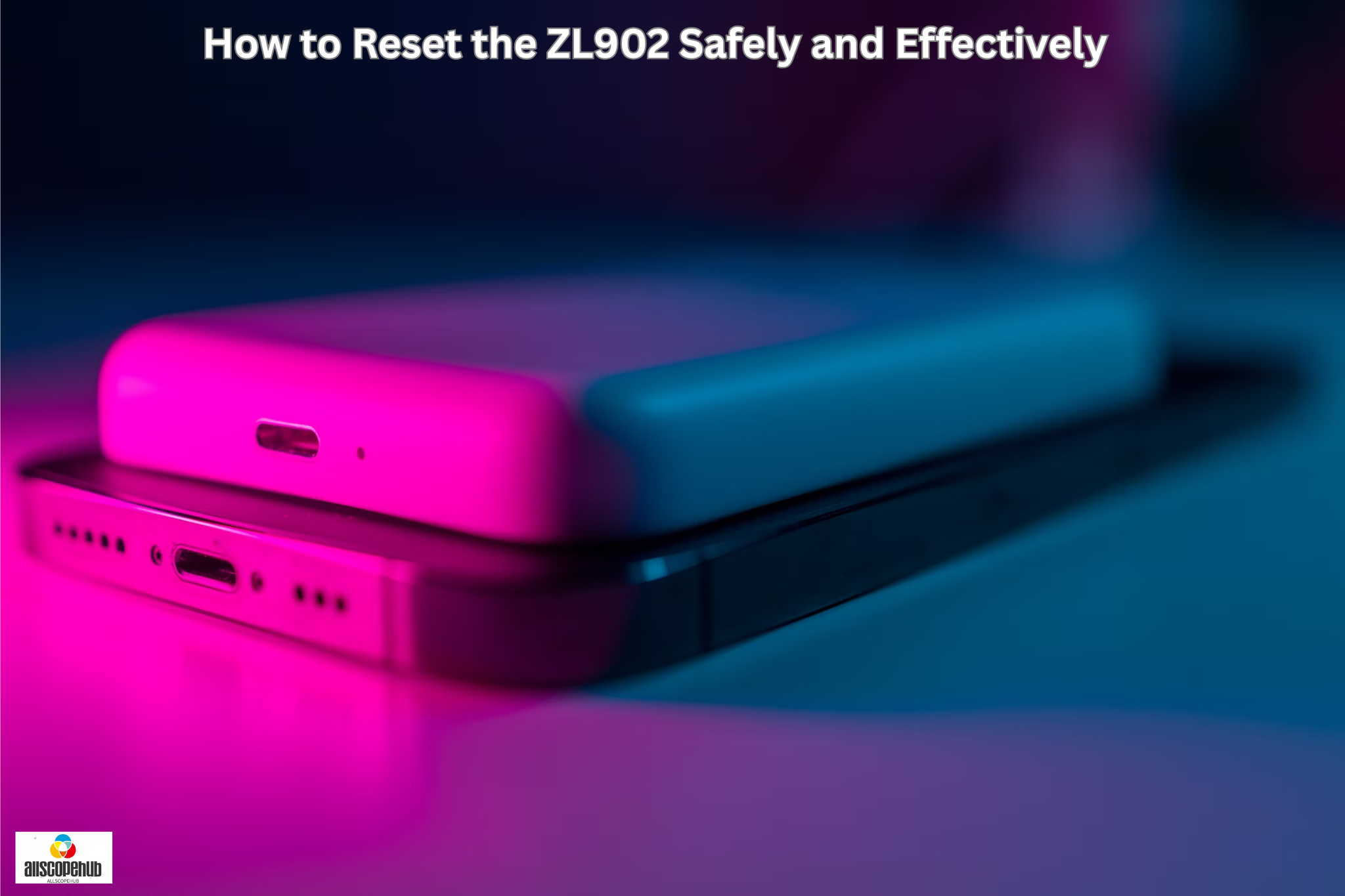You’re Not Alone – And You’re Not Doing It Wrong
Let’s face it—when electronics stop working, it’s frustrating. Whether your system is glitching or you’re just not getting the output you expect, it can feel overwhelming. If you’ve been searching for how to reset the ZL902, you’re not alone. And the good news? Resetting the ZL902 power module is a lot easier than it sounds.
We’ve worked with a range of digital power modules over the years, and we understand how it feels to be stuck staring at a blinking LED or silent output. That’s why we created this simple guide—to help beginners reset their ZL902 safely, effectively, and with confidence—no complex jargon. No tech wizardry is needed. It’s just a calm, step-by-step walkthrough that anyone can follow.
What’s the ZL902 Anyway? And Why It Might Need a Reset
The ZL902 is a digital power module often found in systems where stable voltage regulation is critical. It’s compact, programmable, and used in both hobbyist and commercial applications. Think of it like the tiny brain controlling power delivery in your circuit.
But like any brain, it can get confused—especially after a power surge, incorrect configuration, or thermal overload. That’s when a reset comes in. A soft reset clears temporary glitches and refreshes the module without damaging it or erasing permanent settings.
Quick Safety Checklist Before You Start
Before you grab a screwdriver or start unplugging things, let’s make sure everything’s safe. Here’s what to do:
- Turn off all power sources completely.
- Wait at least 30 seconds after powering down—this lets capacitors fully discharge.
- Wear an anti-static wristband if you’re handling the hardware directly.
- Take a photo of your wiring before disconnecting anything. Trust us—you’ll want that reference later.
You don’t need to be a pro to do this right. Just slow down, double-check everything, and keep safety front and centre.
Step-by-Step: Resetting the ZL902 the Right Way
Ready? Here’s your no-fluff reset procedure:
1. Cut All Power to the System
Don’t just flip a switch—unplug it. Power can linger, and a full reset requires a true shutdown.
2. Disconnect Input and Output Lines
Gently unplug the input and output terminals. If the ZL902 is soldered onto a board, remove the entire module if possible.
3. Let the System Sit
Give it 30–60 seconds of downtime. This allows internal voltages to drop completely and clears temporary memory states.
4. Reconnect Everything Securely
Plug all connections back in exactly as they were. Double-check that no pins are bent or wires are loose.
5. Power On and Observe Behavior
Restore power and watch closely. A properly functioning ZL902 should output stable voltage and operate as it did before.
Still, Having Issues? Try These Quick Fixes
If your reset didn’t work, don’t panic. Here’s what to try next:
- Inspect power supply voltages. If they’re too low or unstable, the module may not boot.
- Check load conditions. A short circuit or excessive current can prevent a successful reset.
- Review firmware settings. If you’ve made changes recently, a faulty configuration might be causing the issue.
- Look for status indicators. Some modules use LEDs or digital outputs to show error states. Grab the datasheet and check what those lights mean.
If all else fails, you might be looking at a deeper issue like firmware corruption, which requires reprogramming the module.
Why Reset Timing Matters More Than You Think
It’s not just about flipping the switch off and on. The way a power module like the ZL902 resets is heavily influenced by something called a power-on reset circuit. It ensures the module doesn’t start until the input voltage is stable and all internal systems are ready.
According to Analog Devices, these supervisory functions play a key role in protecting sensitive components and avoiding system-level bugs during startup. Texas Instruments echoes that—highlighting the importance of having well-timed reset behaviour to maintain internal logic accuracy.
So when we ask you to wait 30–60 seconds, it’s not just for show. It allows the internal circuits to return to a neutral, fully discharged state—setting the stage for a clean reset.
Pro Tips to Avoid Needing a Reset Again
Once your ZL902 is back online, you’ll want to keep it that way. Here’s how:
- Don’t overload it. Know your current limits and stick to them.
- Keep the module cool. Good airflow or heat sinks prevent thermal shutdowns.
- Use surge protection. A small spike in voltage can lock up your power module.
- Update firmware cautiously. Only flash updates from trusted sources, and make backups when possible.
Troubleshooting Checklist (Quick Recap)
If your ZL902 still isn’t cooperating, run through this list:
- ✅ Double-checked all cable connections?
- ✅ Verified clean power supply?
- ✅ Waited long enough for full discharge?
- ✅ Tested load for shorts or high current draw?
- ✅ Observed correct status indicators?
You don’t have to guess. Each of these steps moves you closer to the fix.
The Moment You Realized—You Fixed It
You might not have seen yourself as “techy.” But here you are—resetting digital power modules like a pro. It’s okay if you hesitated or felt unsure. What matters is that you did it.
That little green light flickering back to life? That’s your win.
This isn’t just about a power module. It’s about understanding your tools, feeling in control, and building confidence in the process. And that’s something worth celebrating.
Here to Help, Always
We don’t just write guides—we’re passionate about helping people make sense of their tech. If you’ve followed this guide and your ZL902 is back to normal, awesome. But if you’re still stuck or want to learn more, we’re here.
Next time you’re dealing with an unfamiliar component, don’t sweat it. Bookmark this guide, share it with someone who needs it or keep learning. And if you ever want to dive deeper—into firmware tips, power protection, or even customizing your ZL902 setup—we’ve got more to share.
You’ve got this. And we’ve got your back.



